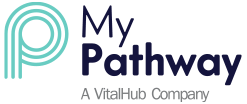Exploring the New Normal with Bob Gomersall

Bob Gomersall discusses how his companies have adapted in response to the pandemic
Originally a theoretical physicist, Bob Gomersall is the Chairman of BTL, ADI Health and Virtual College. BTL, founded in 1985, specialises in assessment technology for awarding bodies and professional associations. Virtual College, created in 1995 and now with over four million registered learners, specialises in online vocational training. ADI’s main product is MyPathway, a patient communication system based on the use of mobile phones. These companies have all been created through Bob’s vision of improving education through the use of technology, and both BTL and Virtual College have received many awards over the years including BTL winning the 2020 Queen’s Award for Enterprise and International Trade.
All three businesses have been built on the new technologies which have now reached over 110 countries. Many of the technologies and innovative ideas included have been deemed ‘world firsts’ and seen exceptional growth potential. Back in March 2020, when lockdown began in the UK in response to COVID-19, Bob highlighted how all three companies showed growth as expected. Many turned to online solutions as lockdown began which ‘shook everyone up to make decisions’. The public sector, where Bob’s businesses mostly lie, are known to be slower to change than others. However, during this time, this was no longer the case. At Virtual College, many training materials related to COVID-19, infection control, how to effectively work from home as well as being and mental health saw a large increase. The popularity of the courses rose from around 1000–1500 to over 11,000 in a short period of time as demand soared. Predictably, the BTL assessment and test centres could no longer run however, the demand for remote invigilation increased as where more and more exams were being set at home.
My Pathway at ADI saw the demand come from the sudden change in appointments and its ability to handle the change quickly. The surge in interest came largely through word of mouth, especially in the NHS. Bob Gomersall comments that adapting effectively to the change involved spotting where the change is and managing it effectively.
The changes that have occurred are traditional versus digital. On-screen learning has been around long before this demand was seen as Bob highlights. It could be that we now see a change in the style of learning and teaching. Could one teach more? Alternatively, could learning be broken down into smaller parts with different multiple ways of learning being achieved. Simulations are a good example of this, where there’s no piece of knowledge that cannot be shared without a simulator. This is just one example of innovative technologies waiting to become mainstream.
We saw multiple large changes happen at the start of the pandemic and any further change we see could now be incremental. While many new measures were put in place within education and work, the bigger question lies in what will happen now. This is where many organisations can take advantage of other offerings and create a permanent new way of working and learning. In addition, Bob highlighted the importance of knowing your data and working out what will be of interest to whom. Amazon is a great example of how this has been successfully achieved.
Within education, Bob predicts that more difficulties could be seen. While the sharing of information and factual learning can easily be replicated online, the coaching and motivation to learn comes from the teacher and classroom. The peer to peer to teacher interaction that we have seen since the 19th century can not be replaced so readily. One of the bigger issues Bob shares is that the countries with poorly served education have the most potential. Major opportunities and ability to upgrade the quality of education rapidly exist in areas where access, quality and development are needed immediately. It is also more in demand in those regions is probably where household spend on education is higher and where the majority of students will be in the next 10 years.
Within assessment, remote proctoring has become a secure solution during the pandemic and could be one that is here to stay, with some arguing that it is more secure than large halls. Solutions now allow for real-time and recorded monitoring and while awarding bodies will be very cautious about how they move forward, professional and vocational certifications are showing a more willing digital approach. There is also adaptive testing, where there are no league tables and results are fed back to the teacher directly. The test can then become easier or harder to adjust and highlight a record of progress. This type of learning and assessment can be highly motivational however, not achieved on paper. New ways of learning and assessment that can incorporate this agile approach will allow every child to achieve success rather than asking every student to take one form of assessment.
What is the endpoint? Bob shares how he has lived in this ‘New Normal’ for more than 30 years now, waiting for others to catch up. His three companies have all shown to be ahead of their time, with online appointments through to remote proctoring. ‘It is a challenge to visualise what the endpoint will now be and what the duration would be. When something begins, you never imagine precisely which way it will go. This was true for the competition between CDROMs and the internet. People’s ability to communicate (using the internet) was more important than the quality of the communication and so video — widely used on CDROMs many years ago — went onto a back burner, and has only caught up in the last 5 years.’ While it is unlikely for us to return to what work and education were like before 23rd March, there is still uncertainty as to what it will look like in the future because there are so many different directions it could take.
EdTechX Article Published online 25 August 2020
